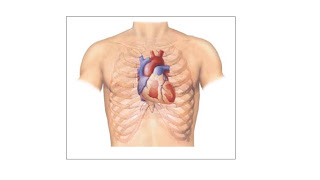 Doing a good assessment, it is necessary to the understanding, practice and skills, recognize the signs and symptoms displayed by patients. This process is carried out through the interaction of client care, observation, and measurement.
Doing a good assessment, it is necessary to the understanding, practice and skills, recognize the signs and symptoms displayed by patients. This process is carried out through the interaction of client care, observation, and measurement.The purpose of conducting the assessment:
- Assessing cardiovascular function.
- Know the early presence of real or potential problems.
- Identifying the cause of disturbance.
- Plan how to overcome existing problems and avoid the problems that will occur.
Assessment techniques:
Assessment can be done at least once, but can be done several times on a regular basis, eg every hour in critically ill patients. Assessment techniques include:
- Assessment
- Physical examination
- Diagnostic tests / investigations
Interview:
1. The main complaint
Ask about the most important problems perceived by the client, so it needs help. Complaints that should be considered include shortness of breath, chest pain radiating to the arms, fatigue, cough, or bloody mucus, fainting, palpitations, and other according to the pathology of the disease.
2. History of present illness
Ask about the course of the disease, since the complaint until the client asks for help. For example:
- ask since when the complaint is felt,
- how many times the complaint occurred,
- how the nature of the complaint,
- when and what the cause of the complaint,
- circumstances which aggravate and mitigate the complaint,
- how to attempt to resolve complaints before asking for help,
- the success of action.
Ask about the disease that never experienced before:
- ask whether the client had been treated previously
- with any disease,
- have you ever experienced severe pain
- family history
- employment history
- history of geography
- history of allergy
- social habits
- smoking habits
Physical examination of the cardiovascular system
- In topographic heart is in the front cavity of the mediastinum
- The chest which is occupied by the projection of the heart as illustrated above is called the precordium
General considerations:
- Clothes for the patient should be prepared in an open state.
- The courtroom must be quiet to show adequate auscultation.
- Fixed always maintain patient privacy
- Prioritize and watch for signs of distress.
Signs were observed:
(1) form of the precordium
(2) at the apex of the heart rate
(3) The pulse of the chest
(4) venous pulse
No comments:
Post a Comment